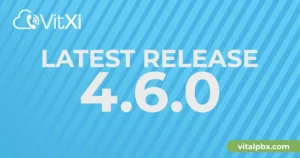Don’t Break the Network: How Carriers Should Approach PBX Upgrades
For telecommunications carriers, the network is the lifeblood of their operations. It’s the intricate system that connects businesses, families, and critical services. When considering carrier PBX upgrades, the stakes are incredibly high. A misstep can lead to widespread disruptions, dissatisfied customers, and significant financial repercussions. This isn’t just about implementing new technology; it’s about safeguarding network integrity and ensuring seamless service continuity. In 2025, with businesses more reliant on robust communication than ever, carriers must approach PBX upgrades with meticulous planning and flawless execution.
The phrase “don’t break the network” should be the guiding principle for any carrier undertaking a PBX modernization project. This blog post will delve into how carriers can navigate the complexities of PBX upgrades, ensuring their networks remain stable, reliable, and ready to meet the evolving demands of their customers. We’ll explore strategic planning, best practices for execution, and the critical considerations for post-upgrade success.
The Carrier Conundrum: Why PBX Upgrades Can’t Afford to Disrupt Your Network
Upgrading a Private Branch Exchange (PBX) system within a carrier’s infrastructure is far more complex than a typical enterprise deployment. Carriers serve a multitude of diverse clients, each with unique configurations and dependencies. The potential for a cascading failure is a serious concern that demands a cautious and well-thought-out approach to any PBX upgrade for carriers.
The Ripple Effect: Understanding the Impact of Network Downtime
Network downtime, even for a short period, can have devastating consequences for a carrier. It’s not just about a few dropped calls. For businesses relying on the carrier’s services, this could mean lost sales, missed critical communications, and damage to their own operational efficiency. Emergency services, healthcare providers, and financial institutions all depend on unwavering network reliability. Any disruption caused by a poorly managed telecom carrier PBX upgrade can have far-reaching societal and economic impacts.
The cost of downtime isn’t just operational; it’s reputational. News of service outages spreads rapidly in today’s hyper-connected world, eroding customer trust and potentially leading to customer churn. Carriers invest heavily in building reliable networks; an upgrade should enhance this reliability, not compromise it.
Customer Trust and Carrier Reputation: What’s at Stake in 2025?
In the competitive landscape of 2025, customer experience is a key differentiator. A seamless PBX upgrade, one that introduces new features and improved performance without interruption, can significantly enhance customer satisfaction. Conversely, an upgrade fraught with issues can irrevocably damage a carrier’s reputation.
Customers expect their communication services to be “always on.” They are less tolerant of excuses and more likely to switch providers after a negative experience. Therefore, ensuring network stability during PBX upgrade processes is paramount to maintaining and growing a loyal customer base. The long-term health of a carrier business hinges on this trust.
Regulatory Compliance and SLA Adherence During PBX Transitions
Carriers operate within a stringent regulatory framework and are often bound by Service Level Agreements (SLAs) that guarantee specific uptime percentages and service quality. Failure to meet these obligations during a PBX upgrade can lead to hefty fines, legal challenges, and further damage to their standing.
Planning for carrier PBX upgrades must include a thorough review of all regulatory and contractual obligations. The upgrade process itself needs to be designed to ensure continuous compliance, with contingency plans ready to address any unforeseen issues that might threaten SLA adherence.
Laying the Groundwork: Strategic Planning for Successful Carrier PBX Modernization
A successful PBX upgrade is 70% planning and 30% execution. Rushing into a PBX migration for carriers without a comprehensive strategy is a recipe for disaster. Careful, detailed planning is the bedrock upon which a smooth transition is built.
Comprehensive Network Audit: Knowing Your Starting Point for a PBX Upgrade
Before even considering new PBX solutions, carriers must conduct an exhaustive audit of their existing network infrastructure and legacy PBX systems. This includes:
- Mapping all interconnected systems and dependencies.
- Assessing current network capacity and potential bottlenecks.
- Identifying all customer configurations and customizations.
- Documenting current call routing, IVR setups, and voicemail systems.
- Understanding integration points with other critical carrier systems (billing, provisioning, monitoring).
This deep dive provides a clear picture of the current state, highlighting potential challenges and areas requiring special attention during the legacy PBX replacement for carriers. Without this foundational knowledge, planning is merely guesswork. For more on preparing your infrastructure, see resources like VitalPBX Blog: Is Your Network Ready for VoIP?.
Defining Clear Objectives: What Does PBX Upgrade Success Look Like for Carriers?
What does the carrier hope to achieve with the PBX upgrade? Is it to introduce new Unified Communications (UC) features, improve scalability, reduce operational costs, or enhance security? Defining clear, measurable objectives is crucial. These objectives will guide the selection of the new PBX system and the overall migration strategy.
For example, an objective might be “To upgrade 90% of enterprise customers to the new UC-enabled PBX platform within 12 months with less than 0.01% call drop rate increase during migration windows and a 15% improvement in provisioning time for new services by 2025.” Such specific goals help keep the project focused and allow for effective post-upgrade evaluation.
Choosing the Right PBX Solution: Scalability, Reliability, and Future-Readiness
Selecting the new PBX system is a critical decision. Carriers should look for solutions that are not only robust and reliable but also scalable and future-proof. Key considerations include:
- Carrier-Grade Reliability: The system must be designed for high availability and fault tolerance.
- Scalability: Can the system easily scale to accommodate future growth in users and traffic?
- Feature Set: Does it offer modern UC features, advanced call management, and robust security? Explore options like those discussed in VitalPBX Blog: Top 10 Must-Have PBX Features.
- Interoperability: How well does it integrate with existing network elements and third-party applications? Adherence to open standards like SIP is crucial (see IETF RFC 3261 for SIP details).
- Management and Provisioning: Does it offer centralized management, easy provisioning, and comprehensive monitoring tools?
- Support and Vendor Partnership: What level of support does the vendor offer? Is the vendor a reliable long-term partner?
Solutions like VitalPBX are designed with these carrier needs in mind, offering flexibility and powerful features for modern communication networks.
The Critical Role of Stakeholder Communication in Carrier Upgrades
A carrier PBX upgrade impacts multiple internal teams (engineering, operations, sales, support) and, most importantly, customers. Establishing a clear communication plan is vital:
- Internal Alignment: Ensure all internal teams understand the project scope, timelines, and their respective roles. Regular inter-departmental meetings are essential.
- Customer Communication: Proactively inform customers about upcoming changes, potential (minimal) service windows, and new benefits. Transparency builds trust.
- Feedback Channels: Establish channels for feedback from both internal teams and customers throughout the process.
Effective communication can preempt misunderstandings, manage expectations, and foster a collaborative environment, which is crucial for navigating the complexities of such a large-scale project.
Navigating the Upgrade Path: Carrier Best Practices for Minimizing PBX Transition Risks
With a solid plan in place, the focus shifts to execution. This phase requires precision, meticulous attention to detail, and a commitment to minimizing disruption throughout the carrier PBX upgrade process.
Phased Rollouts vs. Big Bang: Choosing the Right Migration Strategy for Your Network
For most carriers, a “big bang” approach – switching everything over at once – is too risky. A phased rollout, migrating customers or network segments in manageable stages, is generally the preferred method. This allows carriers to:
- Test the new system with a smaller group of users first.
- Identify and resolve issues on a limited scale.
- Gather feedback and refine the process before wider deployment.
- Allow technical teams to gain experience with the new platform.
The specifics of the phased approach (e.g., geographic, by customer type, by service) will depend on the carrier’s unique network topology and customer base. The key is to break down the PBX migration for carriers into controlled, manageable steps.
Rigorous Testing in Staging Environments: The Key to a Flawless PBX Switchover
Before any live customer is migrated, the new PBX system must undergo exhaustive testing in a dedicated staging environment that mirrors the production network as closely as possible. This testing should cover:
- Functionality: All features, call flows, IVRs, voicemail, conferencing, etc.
- Performance and Load Testing: Simulating peak traffic to ensure the system can handle real-world demands.
- Interoperability Testing: Verifying seamless operation with other network elements (gateways, session border controllers, billing systems).
- Security Testing: Vulnerability assessments and penetration testing to ensure the platform is secure.
- Failover and Redundancy Testing: Ensuring backup systems engage correctly during simulated failures.
Only after the system passes all tests with flying colors should the carrier proceed with migrating live traffic. This rigorous testing is fundamental to minimizing downtime during PBX upgrades for carriers.
Developing Robust Rollback Plans: Your Safety Net for Carrier PBX Upgrades
Despite the best planning and testing, unforeseen issues can arise during a live migration. A well-defined rollback plan is crucial. This plan should detail the exact steps required to revert to the previous system quickly and efficiently if major problems occur.
The rollback plan should be tested just as rigorously as the upgrade process itself. Knowing you have a viable exit strategy provides confidence and significantly reduces the risk associated with the carrier PBX transition. It’s the ultimate “don’t break the network” safeguard.
Real-time Network Monitoring and Proactive Issue Resolution
During and after each phase of the migration, intensive network monitoring is essential. Carriers should use advanced monitoring tools to track key performance indicators (KPIs) such as:
- Call completion rates
- Call setup times
- Audio quality (MOS scores)
- System resource utilization (CPU, memory, bandwidth)
- Error rates
Proactive monitoring allows technical teams to identify and address potential issues before they impact a significant number of customers. A dedicated “war room” or command center during critical migration windows can facilitate rapid response.
Beyond the Switch: Post-Upgrade Optimization & Future-Proofing Carrier Communication Services
The job isn’t done once the last customer is migrated. The post-upgrade phase is critical for optimizing the new system, ensuring long-term stability, and capitalizing on the new capabilities to future-proof carrier networks with advanced PBX features.
Comprehensive Training for Staff and End-Users
Both internal staff (support, technical teams, sales) and, where applicable, enterprise end-users or their administrators need thorough training on the new PBX system.
- Technical Staff: Need in-depth knowledge of system architecture, management, troubleshooting, and provisioning.
- Support Teams: Must be equipped to handle customer queries related to new features and functionalities.
- Sales Teams: Need to understand the new service offerings to effectively market them.
- Customers: Should receive clear documentation, tutorials, or training sessions on how to use new features. For insights into modern communication tools, check out VitalPBX Blog: What is Unified Communications?.
Well-trained users lead to higher adoption rates and greater satisfaction.
Establishing Proactive Maintenance and Support Protocols for New PBX Systems
The new PBX system will require ongoing maintenance, including software updates, security patching, and performance tuning. Carriers should establish clear protocols for these activities, aiming for proactive rather than reactive maintenance.
Robust support mechanisms, both internal and from the PBX vendor, are also essential. This ensures that any issues that arise post-launch can be addressed quickly and effectively, maintaining the high levels of service reliability expected by customers.
Scaling Your PBX Infrastructure for Future Growth and Evolving Demands in 2025
The communications landscape is constantly evolving. The chosen PBX solution and the underlying infrastructure must be scalable to accommodate future growth in subscribers, traffic, and the demand for new services. Carriers should regularly review capacity and performance metrics to anticipate scaling needs.
The flexibility of modern PBX solutions, especially cloud-native or virtualized platforms, can make scaling more manageable and cost-effective than with legacy hardware. Planning for growth in 2025 and beyond ensures the PBX investment remains valuable for years to come.
Continuously Evaluating Performance and User Feedback
Ongoing evaluation is key to continuous improvement. Carriers should:
- Regularly monitor system performance against the objectives set during the planning phase.
- Collect feedback from customers and internal teams regarding their experience with the new PBX system.
- Use this data to identify areas for further optimization, new feature development, or service enhancements.
This iterative approach ensures the PBX platform continues to meet and exceed expectations.
Frequently Asked Questions (FAQs) About Carrier PBX Upgrades
Navigating a carrier PBX upgrade often brings up many questions. Here are answers to some common queries:
Q1: How can carriers ensure network stability during a PBX upgrade?
A: Network stability is ensured through meticulous planning, comprehensive network audits, choosing a carrier-grade PBX, rigorous testing in staging environments, phased rollouts, robust rollback plans, and real-time monitoring during and after migration.
Q2: What are the biggest challenges carriers face when upgrading their PBX systems?
A: Key challenges include minimizing service disruption to a large and diverse customer base, managing complex integrations with existing systems, ensuring data integrity during migration, training staff and customers on the new platform, and managing the overall cost and timeline of such a significant project. The risk of “breaking the network” is the overarching concern.
Q3: What is the best way for a carrier to migrate from a legacy PBX?
A: A phased migration approach is generally best. This involves moving customers or network segments in manageable stages, allowing for testing, issue resolution, and learning at each step. This contrasts with a high-risk “big bang” cutover. Thorough documentation of the legacy system and careful planning of the new system’s configuration are also critical.
Q4: Can carriers perform PBX upgrades without any downtime?
A: Achieving zero literal downtime is extremely challenging for complex carrier networks, but the goal is always to minimize any service impact to be imperceptible to most users. This is done through carefully planned maintenance windows (often during off-peak hours), redundant systems, and efficient cutover processes. “Hitless” upgrades are the ideal, where services failover seamlessly.
Q5: What features should carriers look for in a new PBX system in 2025?
A: In 2025, carriers should look for PBX systems offering robust Unified Communications (UC) features (voice, video, messaging, presence), cloud-native or cloud-ready architecture for scalability and flexibility, advanced security protocols, comprehensive APIs for integration, carrier-grade reliability and redundancy, sophisticated analytics, and user-friendly management interfaces. For a deeper dive into security, consider resources like VitalPBX Blog: VoIP Security Best Practices.
Q6: How does a carrier PBX upgrade impact existing customer SLAs?
A: A primary goal of the upgrade planning process is to ensure that all customer SLAs are maintained or even improved. Migration strategies, maintenance windows, and contingency plans must all be designed with SLA compliance as a top priority. Any potential temporary impact should be communicated transparently and agreed upon if absolutely unavoidable.
Conclusion: Upgrading with Confidence, Not Chaos
For carriers, upgrading PBX systems is a significant undertaking, but it’s also an opportunity to enhance service offerings, improve operational efficiency, and future-proof their networks. The guiding principle must always be: Don’t Break the Network. By prioritizing meticulous planning, adopting a phased and tested approach, maintaining transparent communication, and choosing a robust and scalable PBX solution, carriers can navigate these complex transitions successfully.
The PBX upgrades of 2025 are about more than just technology; they are about reinforcing customer trust, maintaining a competitive edge, and ensuring the seamless flow of communications that underpin our modern world. A well-executed upgrade strengthens the network and positions the carrier for continued success.
Ready to explore a PBX solution built for the demands of modern carriers? VitalPBX offers a powerful, flexible, and scalable platform designed to meet your evolving communication needs. Discover how VitalPBX can support your next upgrade and help you deliver exceptional service without compromising network integrity.
Download VitalPBX today and experience the future of carrier-grade communications!




